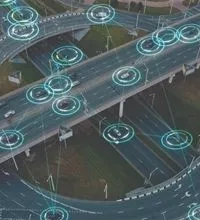Has the shift to electrified two-wheelers accelerated?

Post-pandemic could see a shift away from traditional public transport, so could companies such as Silence benefit from a boom in electrified two-wheelers?
As lockdown restrictions have begun to ease, we’ve already started to see our transport patterns returning to pre-coronavirus levels. One issue gathering the attention of cities across the country is that we are witnessing a (completely rational) resistance to the return of high-density public transport.
In those circumstances, however, it’s important that appropriate replacements are not only affordable, but space and energy efficient too. We’re already well on the way to electrifying four-wheeled transport, and now two-wheelers are starting to turn away from combustion too.
Silence is just one of a number of firms looking to build its position in the market. The Spanish company may be a fresh face in the UK, but it’s one of the most revered and best-selling electric scooter brands on the continent, supplying vehicles for the Spanish police, the Spanish postal service as well as licensing its vehicles to the Volkswagen Group under the SEAT brand. If you’re after a true disclaimer of this bike’s quality, the only tangible difference between the company’s Silence S01 and the renamed, re-marketed SEAT MÓ is the colour.
The defining feature of all Silence scooters is its detachable battery system, which gives owners total freedom as to where and how they charge. While the scooter is able to charge in situ via any three-pin plug connector, owners can also detach the 5.6kWh battery ‘cube’ from the scooter’s chassis, wheeling it away via an integrated telescopic handle and hidden set of wheels as if it’s a piece of carry-on cabin luggage. Albeit a heavy 40kg suitcase.
Better news still is the fact the underseat storage - a key selling point on any practical scooter purchase - is completely separate from the battery housing. Most electric scooters on sale are either able to offer big batteries (and range) or a large underseat storage compartment, yet the Silence S01 manages both. The storage here is generous enough to accommodate two full-face helmets, or a bike chain and cover.
A 7kW Bosch motor is attached to the rear hub for gearless acceleration and when combined with its bespoke configuration of cylindrical cells, develop the equivalent performance of a 125cc petrol engine without any tailpipe emissions. Good for urban travel.
One full charge of the battery takes under eight hours from a domestic 240V plug socket and costs less than one pound sterling. Yes, really. And that’s without navigating any specific off-peak energy tariffs. At this stage, it’s probably worth reminding commuters that a London travelcard for Zones 1-4 costs more than £2,000 per year.
A ring of LED lights on the battery’s casing visually informs you of the vehicle’s state of charge, but this charging status can also be accessed remotely via the Silence App. Additionally, you can view the location of your bike, review your journey history and how much carbon you’ve helped to save and remotely unlock your S01, should you be foolish enough to let anybody else ride it.
That list price actually places it alongside more traditional, petrol-powered models from Honda - the Forza - as well as the Vespa Primavera, and doesn’t take into account the additional savings from the faintly believable 1p per mile ‘fuel’ costs, the reduced vehicle tax and servicing schedule.
Silence is one of a growing number of companies that are looking to build on new approaches to mobility. It was a path already started down as the industry looks to electrify, but the pandemic could help accelerate adoption as people look for different ways to make regular journeys.




